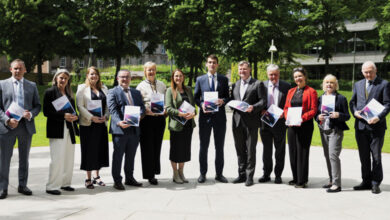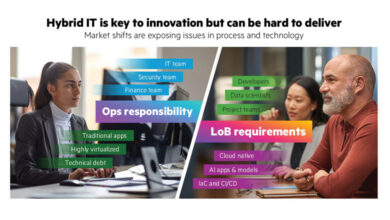Digital government in Ireland: Progress and priorities in 2025

The Better Public Services: Public Service Transformation 2030 strategy continues to act as the overarching framework for public service reform, with digitalisation identified as a core enabler of service improvement.
The latest update from the Department of Public Expenditure, Infrastructure, Public Service Reform and Digitalisation outlines progress in embedding user-centred design, strengthening data governance, and building digital capability across the State.
The strategy emphasises integrated service delivery and a “digital by default” approach, with reforms supported by common platforms, shared data services, and responsible technology adoption. According to the 2025 update, these measures aim to improve efficiency, accessibility, and public trust in state services.
The Connecting Government 2030 strategy, led by the Office of the Government Chief Information Officer, provides the ICT and data architecture to deliver on the Better Public Services vision. Its priorities include interoperability, cybersecurity, and the development of common components such as the Government Digital Wallet, which is scheduled for beta launch later in 2025. The wallet aims to comply with the EU Digital Identity (eIDAS 2.0) Regulation, enabling secure EU-wide sharing of digital documents such as driving licences and birth certificates.
The Government’s 2025 Programme for Government reaffirms commitments to digital transformation, aligning national targets with the EU’s Digital Decade objectives. This includes the provision of all key public services online by 2030, the integration of once-only data sharing, and meeting EU benchmarks for user-centricity and availability.
“We want to have much greater use of AI, and we have published guidance to empower and enable public servants to be a greater use of AI within public service.”
Minister Jack Chambers TD
Ireland’s approach is also shaped by European legislation, including the Interoperable Europe Act, the Single Digital Gateway Regulation, and eIDAS 2.0. Work is underway to ensure compliance through platform integration and cross-border service compatibility, with the State of the Digital Decade 2025 report tracking Ireland’s milestones against EU targets.
According to the European Commission’s eGovernment Benchmark 2024, Ireland performs strongly in digital services for business and government transparency, though further work is needed in complex service domains such as digital health records to reach top-tier EU performers like Denmark and Estonia.
The OECD’s Government at a Glance 2025 places Ireland among the highest-scoring countries for digital government governance, alongside the UK, Denmark, Korea, and Australia. The OECD notes that Ireland’s strengths lie in central coordination, investment in shared digital infrastructure, and the establishment of national service design standards. The OECD Digital Government Index similarly ranks Ireland in the top cohort for “digital by design”, “user-driven”, and “data-driven” government, reflecting consistency in its approach over recent years.
Delivery measures underway in 2025 include expanded use of life-event service models – bundling procedures for major life changes such as starting a business or moving home – and increased automation of back-office processes. Interoperable systems are enabling greater data sharing across departments, while front-end improvements focus on mobile responsiveness, accessibility, and integration with the MyGovID identity platform.
The Government Digital Wallet is one of the flagship projects under Connecting Government 2030. Once fully operational, it will integrate with EU systems to support secure, cross-border access to official credentials. It is expected to reduce administrative burdens, streamline citizen interactions, and enable the development of proactive, event-driven services.
Ireland is also investing in digital skills across the public service to meet the capability requirements of these strategies. Training programmes, guidance documents, and toolkits have been introduced to support public servants in adopting emerging technologies responsibly and effectively.
AI in government
AI has emerged as a key enabler of Ireland’s digital government ambitions. The publication of the Responsible AI Guidelines for the Public Service earlier in 2025 marked a turning point in how the State approaches AI adoption. These guidelines – covering a decision-making framework, a Responsible AI Canvas, and lifecycle management tools – aim to help departments “adopt AI responsibly while protecting citizen rights”.
AI is also being rolled out aiming to support flood risk prediction systems, health service scheduling, and document processing in government departments. However, uptake remains uneven, with some areas still in pilot stages rather than embedded in day-to-day operations. The refreshed National AI Strategy aims to change this, setting a 2030 target for 75 per cent adoption of AI, cloud, and data analytics across enterprises and public services.
Speaking to eolas Magazine in August 2025, DPER Minister Jack Chambers TD says: “We want to have much greater use of AI, and we have published guidance to empower and enable public servants to be a greater use of AI within public service.
“I think there are opportunities in terms of the efficiency and interaction citizens will have with public services and AI once it is used in a balanced way.
“The guidance we have published is very much to encourage the use of AI in public services and more intent to enhance the digitalisation of public services. There are some really good examples of it being used in particular sectors.
“There is a range of different parts of the State using it, but it does need to become much more frequently used to and again, will enhance people’s work and enhance the quality of public services. The guidance that we have set out shows how it should be used, so that people are protected in using it appropriately.”






